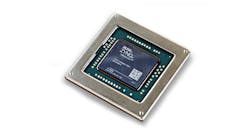Xilinx to Supply RF Chips for Open Standard 5G Network in the US
Xilinx said that it will supply chips for deployment in a new open-standard 5G network to be rolled out in the US by the end of the year, giving it another foothold in the growing market for base station chips.
The Santa Clara, California-based company said it will roll out its UltraScale+ technology to Fujitsu for use in 5G telecom gear based on a standard for open radio access networks, called open RAN (O-RAN). Xilinx said the UltraScale+ devices used within Fujitsu's open radio units (O-RUs) deliver "the best balance" of cost, performance, adaptability, and scalability required for the needs of 5G networks.
A base station is a set of boxes used to connect smartphones and other devices to cellular networks. Today, these boxes are sold primarily by telecom equipment giants such as Nokia, Ericsson, Samsung, Huawei Technologies and other firms including Fujitsu as end-to-end systems, each with proprietary packages of hardware and software that clash with products designed by rival telecom gear makers.
The emerging O-RAN standard acts as a software interface between subsystems in a 5G base station, giving telecom companies the ability to mix and match baseband, radio, or other components. O-RAN promises to give companies the flexibility to add features to 5G networks faster and more cheaply by upgrading software or swapping out radios with alternatives based on O-RAN-compatible ICs.
The standard supports "functional splits" within a 5G base station, ranging from the radio units (RUs) that manage radio frequency functions and the distributed units (DUs) used in baseband processing.
Xilinx is wrestling to win more market share in the 5G infrastructure market from other chip-making giants such as Intel, Qualcomm, Marvell and Broadcom. It is also competing indirectly with custom-designed chips from Nokia, Huawei, Ericsson, and other top telecom manufacturers. Qualcomm, the world's largest smartphone chip maker, plans to start sampling its 5G base station chips in 2022.
Xilinx said the deal includes its programmable radio-frequency system-on-a-chip (RFSoC) devices for the open RAN market. The vendor also said that Fujitsu is evaluating RFSoCs to further reduce cost and power consumption for future deployments. Xilinx, which has agreed to be acquired by AMD in a $35 billion deal, said it will continue to work with industry partners to build out O-RAN solutions.
Liam Madden, EVP and GM of the wired and wireless business at Xilinx, said the combined product will be rolled out on "a major greenfield 5G network" by an unnamed US wireless carrier later in 2021.

